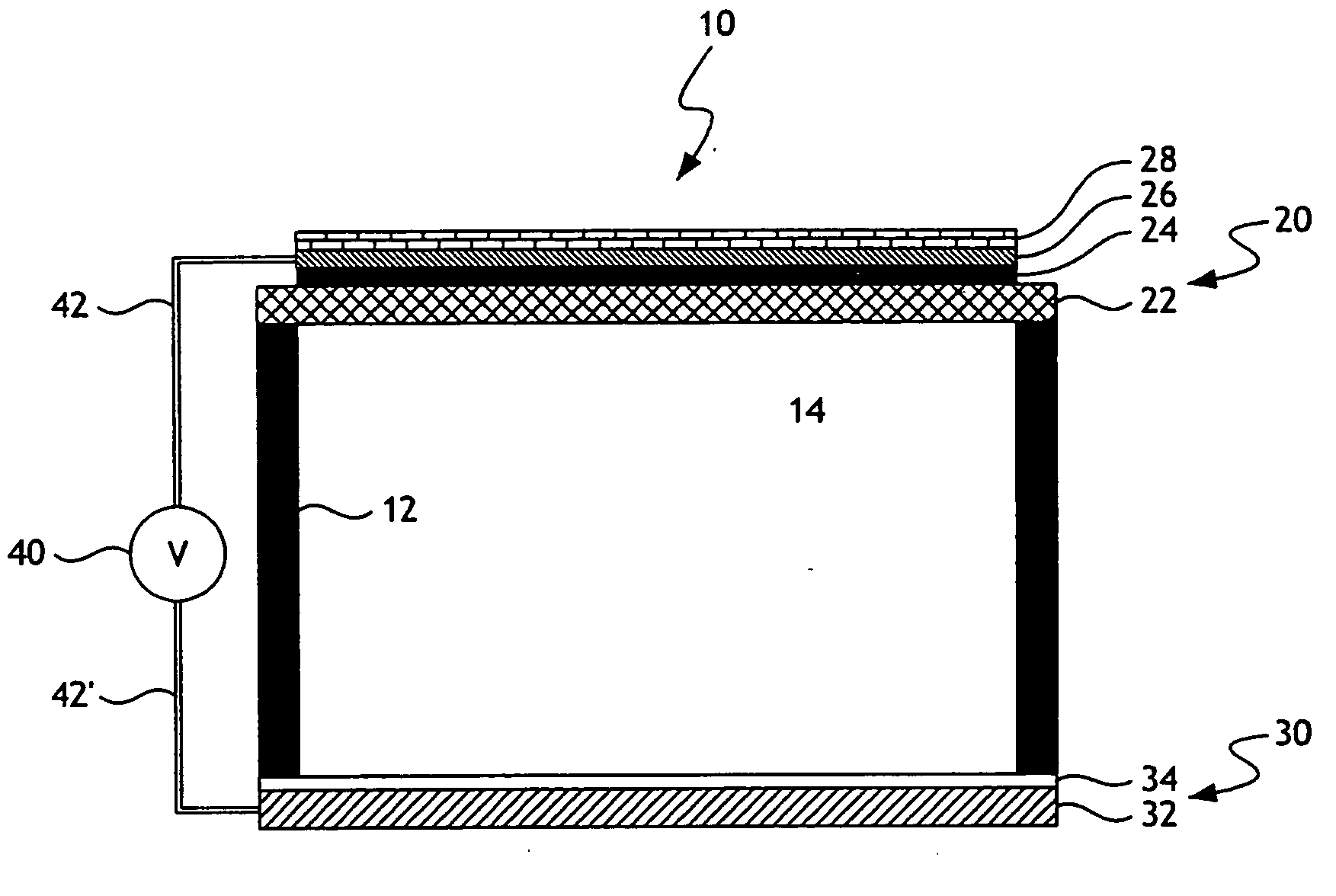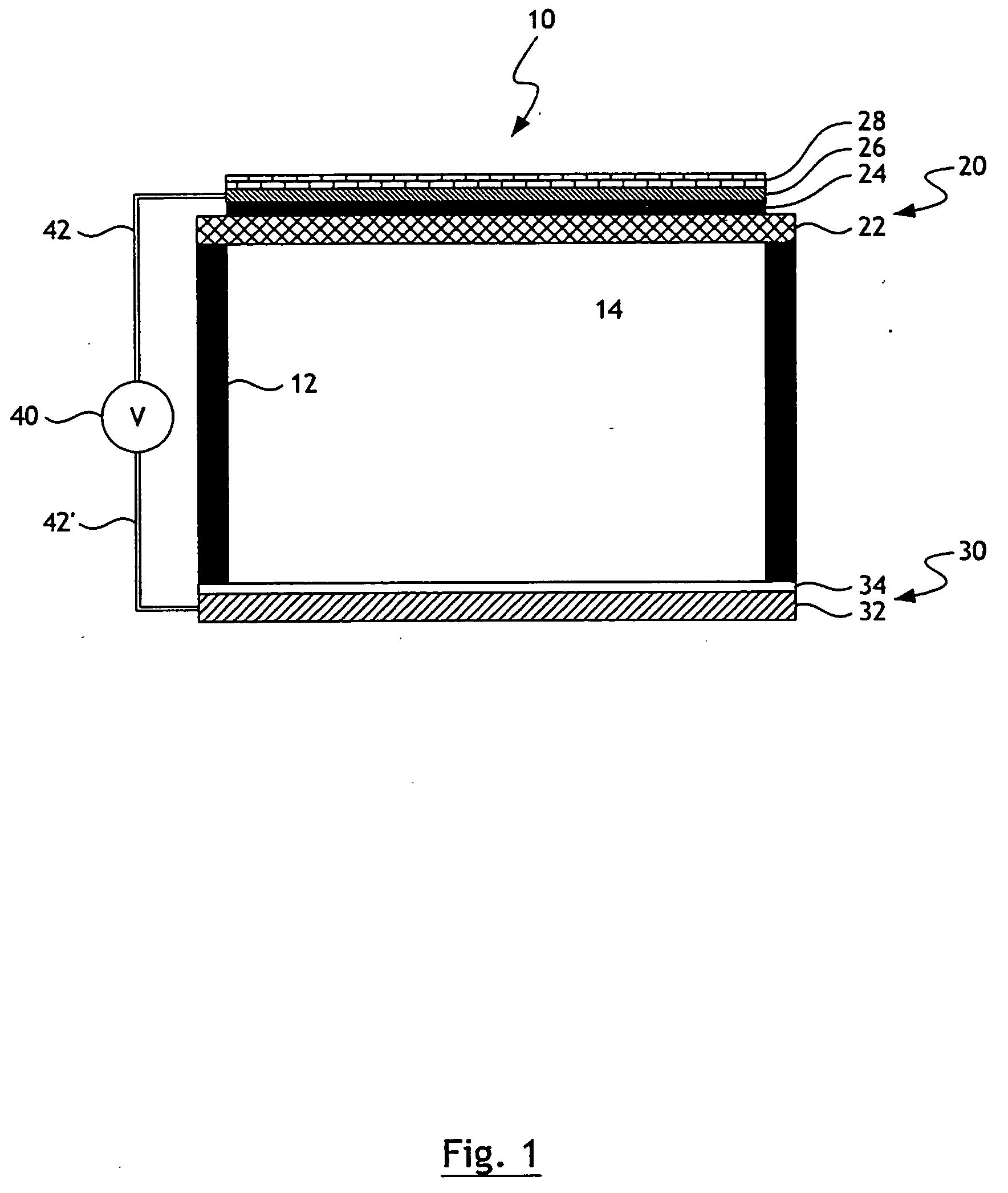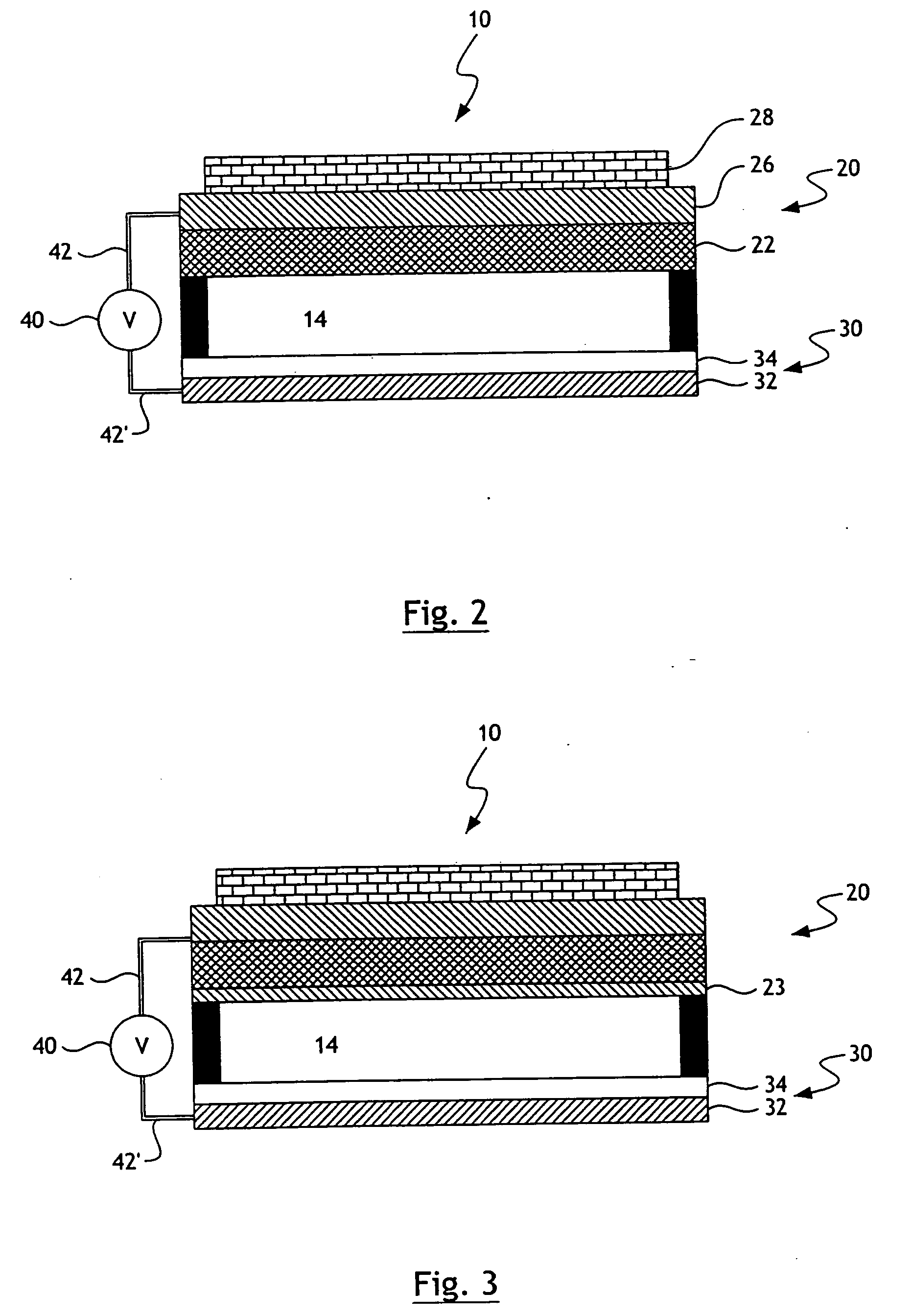Dielectric barrier discharge plasma reactor cell
a plasma reactor and dielectric barrier technology, applied in space heating and ventilation, lighting and heating apparatus, heating types, etc., can solve the problems of contaminated buildings, many of these methods are very expensive, and cannot meet all the necessary requirements, etc., to achieve the effect of simple, cost-effective and high efficiency
- Summary
- Abstract
- Description
- Claims
- Application Information
AI Technical Summary
Benefits of technology
Problems solved by technology
Method used
Image
Examples
Embodiment Construction
[0049] DBDP is electrically energized matter in a gaseous state and can be generated by passing gases through electric fields. When voltage is applied to the reactors, the field strength E0 between the gap can be calculated as follows:
E0=U / (d0+d1 / e1) [0050] Where, [0051] U=Applied voltage [0052] d0=Gap distance [0053] d1=Thickness of dielectric material between two electrodes [0054] e1=dielectric constant of the dielectric material.
[0055] As the applied voltage increases, numerous micro-discharges occur inside the gap when E0 reaches its threshold. The charged particles inside the micro-discharges go towards the electrode and accumulate on the surface of the dielectric barrier material. The accumulated charges form another electric field in the opposite direction to the applied field. The formed field then neutralizes the applied field and prevents discharges from turning into spark discharges. The factors controlling the duration and strength of the discharge include applied volt...
PUM
| Property | Measurement | Unit |
|---|---|---|
| operating voltage | aaaaa | aaaaa |
| operating voltage | aaaaa | aaaaa |
| frequencies | aaaaa | aaaaa |
Abstract
Description
Claims
Application Information
 Login to View More
Login to View More - R&D
- Intellectual Property
- Life Sciences
- Materials
- Tech Scout
- Unparalleled Data Quality
- Higher Quality Content
- 60% Fewer Hallucinations
Browse by: Latest US Patents, China's latest patents, Technical Efficacy Thesaurus, Application Domain, Technology Topic, Popular Technical Reports.
© 2025 PatSnap. All rights reserved.Legal|Privacy policy|Modern Slavery Act Transparency Statement|Sitemap|About US| Contact US: help@patsnap.com



